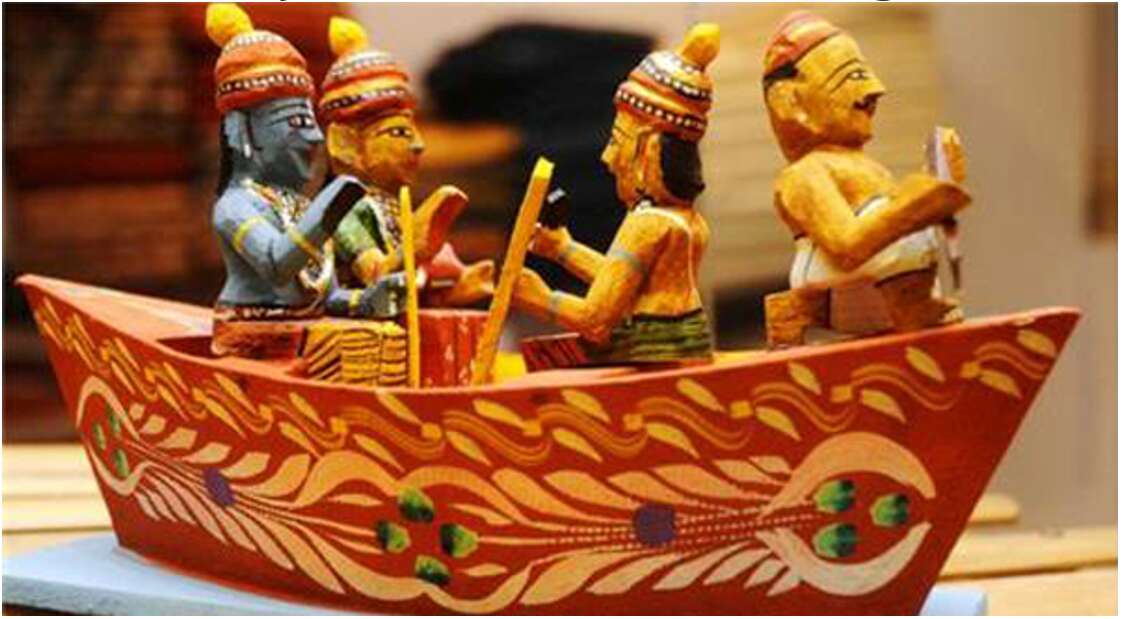Telangana's wood-carved masterpieces
Made of poniki softwood and representing the Kakatiya-era craft, Nirmal toys received the GI tag in 2009, and now offer hope that all the products under the genre will attract popular acceptance

There are toys and toys, and then there are GI-tagged, aesthetically designed, hand-painted and individually crafted Nirmal toys made from the special 'poniki' wood (botanical name Jiuotia Rotteri Fromis) which is found in abundance in the forests and hills adjoining Nirmal — a town of less than one lakh people in the Adilabad District in Telangana.
The craft draws its name from one of the most famous Kannada rulers of the 17th century, Dalwai Nimma Naidu — a great connoisseur of arts. He became the patron saint of this Kakatiya-era craft of softwood toys with attractive paintings, as well as of furniture. It was during his reign that the art of toy-making was 'geographically grounded' in the town of Nirmal, thereby making it possible for Nirmal Toys & Arts Industrial Co-operative Society Ltd to apply for, and receive the GI tag in 2009.
Adilabad was famous for the foundries established to supply war cannons to armies of the Kakatiyas and the Chalukyas, followed by the Qutubshahis and the Nizams. It is said that Naqquash craftsmen from Rajputana region were inducted to carve elegant designs and insignias on the weaponry, which soon developed into a niche specialisation, and many local craftsmen began to specialise in the task of engraving, especially on wood. Nimma Naidu's patronage and encouragement helped the growth and promotion of art of the Nirmal wood engraving.
The three main ingredients that go into the making of these toys are wood, colour, and lye — an alkaline solution used for washing or cleansing. The Naqquash artisans use the softwood poniki (or white sander), which is more pliable and flexible compared to the wood from other conventional trees, giving the artisans an advantage of making a range of toys. The seasoned 'poniki' wood is cut to square or rectangular shapes, from which the products are shaped. The wood is cut as per the requirements by the artisan himself who joins the parts using a thick tamarind paste called 'chinambali'. If the toy has to be made up of two or more pieces of wood, these are joined using 'lappam' — an adhesive of tamarind seeds. This is the stage when details in the shape of limbs, legs, beaks, and feathers are worked upon. This is done by drilling small holes with a sharp pointed drilling instrument called a 'tochan'. Bamboo stems are then inserted into the holes and the best quality lappam is used to give the final shape. The joints are then covered with a fine cotton cloth to reinforce the limbs, and retain the shape.
A mixture of tamarind seed paste and water — called paatu — reinforces the joints before a solution of 'suddamatti' — a clay found on river beds or near canals — and natural gum is applied onto the form using squirrel hair brushes. This works as an adhesive and also provides a fine surface for painting. It also reduces the amount of colour absorbed by the toy during painting. After this process, if any cracks appear on the surface, then small strips of paper called 'chiri' are pasted onto these cracks using 'paatu'.
The artisan can select colour from a variety of natural paints. After the application of natural white colour, coats of coloured paints are applied. Generally, the number of coats is decided depending upon the colour used. The finer details like painting the eyes, fur, tail is reserved for the end. After the final painting, linseed or groundnut oil is used to give a glossy finish, which also increases the life span of the colour.
The motifs used in Nirmal craft are generally inspired from floral designs and frescoes found in Ajanta & Ellora, Kangra and from Mughal miniature art. This involves work of fine detail, and it is not surprising that the training of artists is a rigorous affair. The young acolytes are mentored by their seniors to study the physical features of animals, birds and shapes of fruits as the first step in the initial learning. This helps them understand the proportions that are shown through the drawings. The apprentices are allowed to craft the wooden toys only after mastering the technique of drawing.
The wall plaques and paintings are made a little differently, as teak wood is usually used in this case. The teak wood undergoes a process which involves lacquering the wood surface to get a clear black background, which is then sprayed with colours to get the desired background colour. The artist then paints the design which has been chosen on the wood. Only local, indigenously prepared dyes are used for colouring paintings.
One also notes with regret that some elements of this art form are on the verge of disappearance. Items used as dowry gifts in marriages of Nizam's nobility, like Khanchibba chowki (settee) or the Palang (cot), have gone out of circulation owing to the change in customs. Ganjifa playing cards were also traditionally made in Nirmal, but now their numbers do not cross the double-digit block!
The renewed interest in GI products offers hope that all the products under the genre of Nirmal crafts will get an online patronage so that the tradition grows from strength to strength!
Views expressed are personal



